What is CCTV? CCTV stands for Closed-Circuit Television, is a TV system in which signals are not publicly distributed but are monitored, primarily for surveillance and security purposes. CCTV is to observe, prevent and investigate any accidental case. There are so much purposes of using CCTV, not just for security. Technology improving days by days, image clarity of the camera is getting clearer and clearer.
Some big corporations are even using CCTV to analyze and improve their business. ‘CCTV = Security’ era has gone, now CCTV = Security + Smart Solutions.
The Applications for CCTV (few examples):
Analog Resolution

HD Analog Resolution
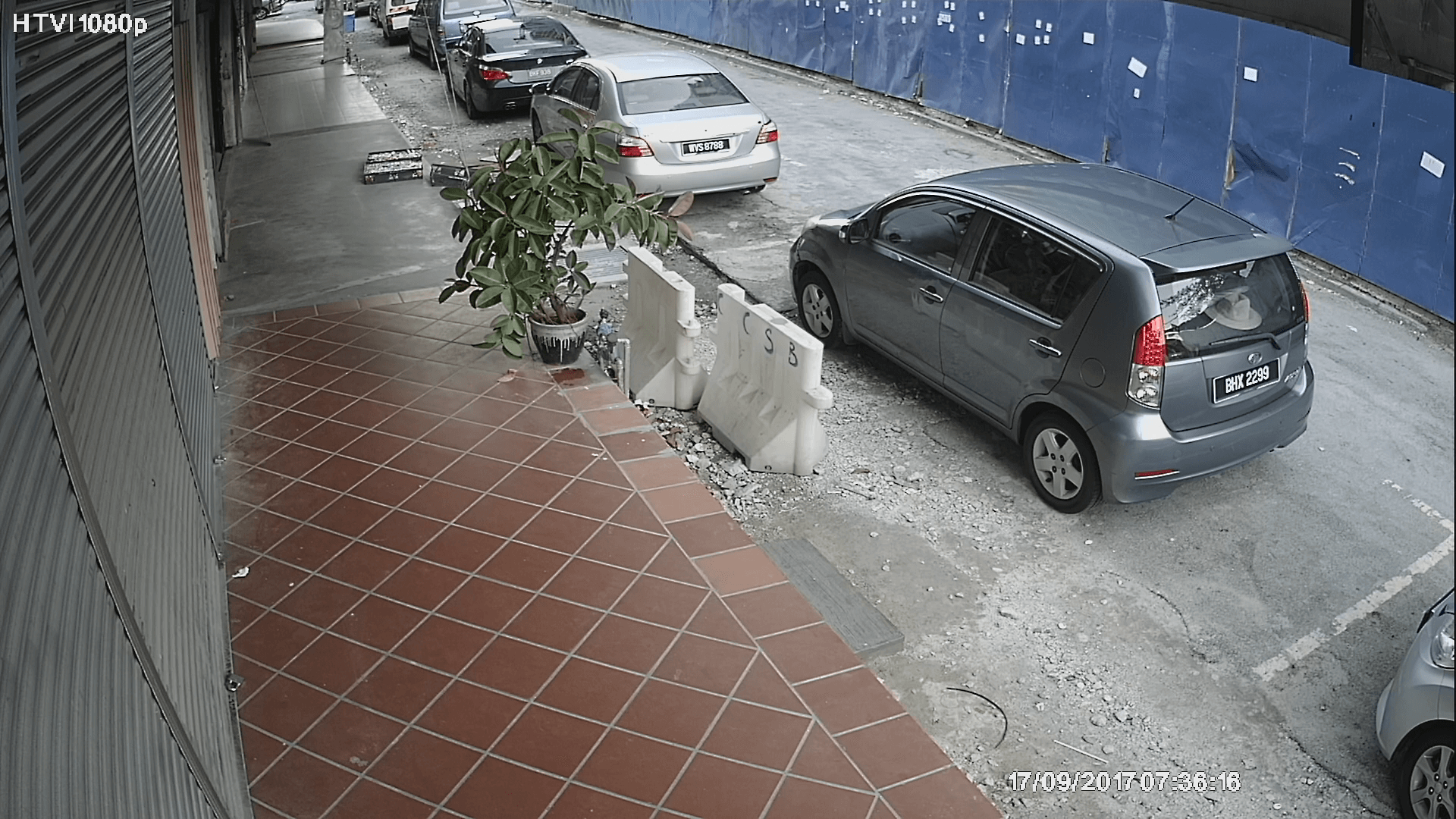
4MP IP Resolution
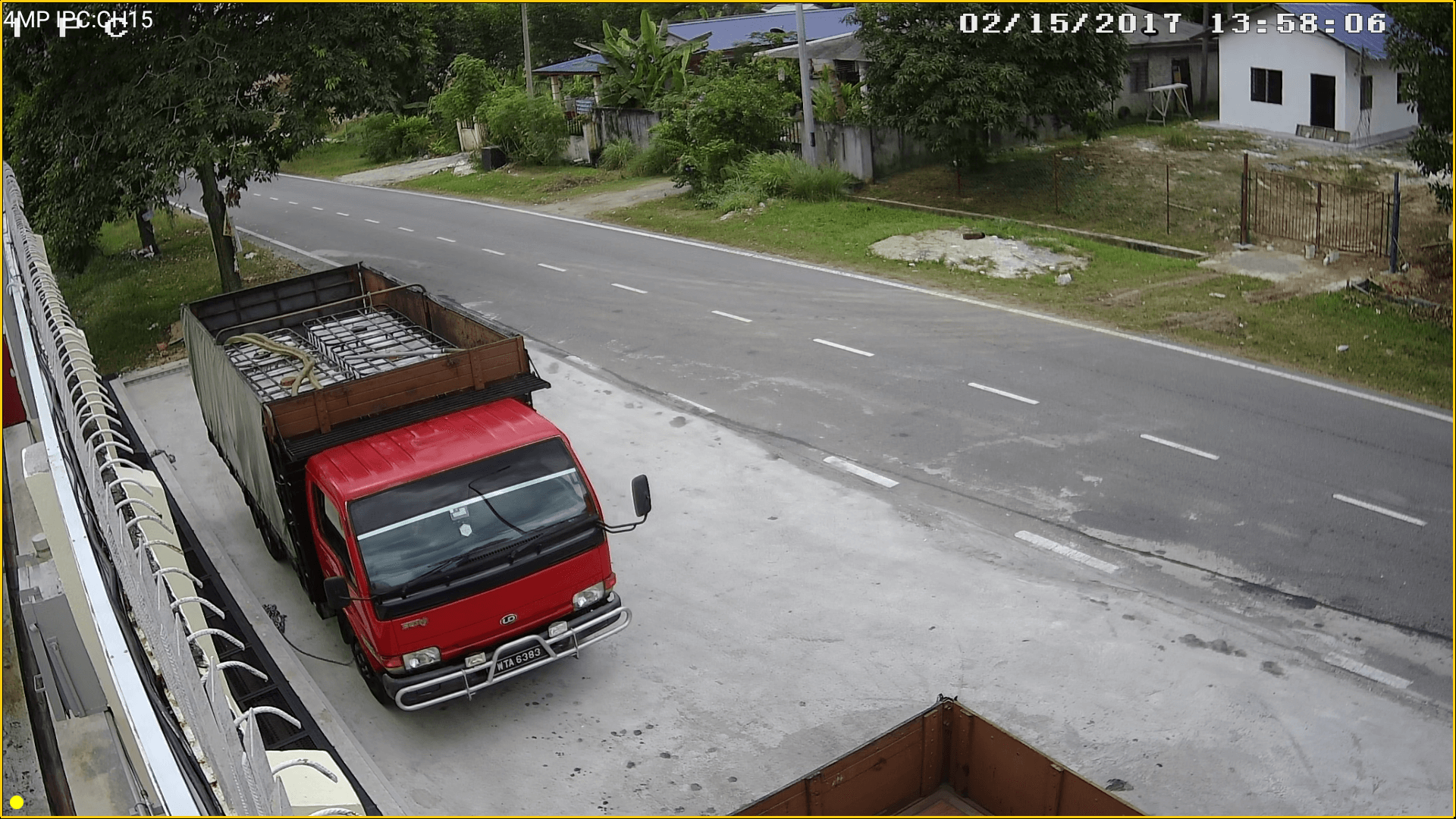
HD Analog came out about 7 years ago and widely used since 2014, it is currently the latest technology in the market. Actually, this topic is not included earlier. As I mentioned, this website is built to simplify security information and I don’t think this topic is important to know much because it might complicate a people without basic knowledge. I will explain this lightly for people who are curious about it.
HD Analog comes in HD-CVI, AHD and HD-TVI (from earliest to latest), simply called them CVI, AHD, TVI, each technology developed by different company. Many of the websites says good things about TVI, and AHD is the most widely used. We are selling both AHD and TVI. TVI comes with a finer image but some people prefer the image colour of AHD. Personally, I prefer the image colour of CVI but I don’t think it is good for a big project as the colour of the image is too vivid, making the monitoring work difficult due to the over colourful image on the monitor. There is no winner or loser among these technologies; theoretically yes but practically each has good and bad. Given example, Ferrari and Lamborghini both are supercars, but no one can tell which is faster because it also depends on the specific model and driver skills. Inexperienced installer may affect the systems perform its best, and monitor or TV using relates to the sharpness and colour of the image as well. Please do not obsessed with those websites or articles that like to compare with a winner or loser, sometimes because they are selling it or even paid for doing that. There are also poor factories manufactures all these AHD, CVI and TVI products, so we can’t tell which is good or bad by their technology because the products itself already came with poor quality. Keep in mind, Reliability is always the most important aspect when comes to security systems.
| HDCVI = | High Definition Composite Video Interface |
|---|---|
| AHD = | Analog High Definition |
| HDTVI = | High Definition Transport Video Interface |
Let us compare between these two technologies.
| HD Analog | IP |
| Megapixel Resolution | Megapixel Resolution |
|
|
| Zero Latency | < 1 Second Latency |
| In surveillance industry, latency is the time between the instant a frame is captured and the instant that frame is displayed. Simple explanation, the time gap between the moment that person pass by the camera and the moment you see it on your monitor. | |
| Cost-effective | 30% to 50% higher cost than HD Analog |
| It is a very common camera/technology nowadays; of course the price has to be affordable. | A must for a bigger project, due to its flexibility. Shopping mall, office building, big factory mostly are using IP cameras with fiber solutions. Large property needs it, due to its flexibility for future expansion. |
| External Microphone | Built-in Microphone |
| If a mic needed for special purpose such as conference room then the mic need to buy and install separately. | Not every IP camera comes with a built-in mic, can request if needed. |
Although HD Analog technology is very common nowadays, but that doesn’t mean you will definitely get HD Analog camera on your new installation, please check whenever a quotation is given.
Wired, mean must connect Camera with Recorder using a cable. Wireless, mean Camera can connect the Recorder wirelessly. Wired camera can be HD Analog camera or IP camera. Wireless camera is also called wireless IP camera, only IP camera can be wireless at today’s technology, there is no such thing called wireless HD Analog camera.
Wired Connectivity Diagram
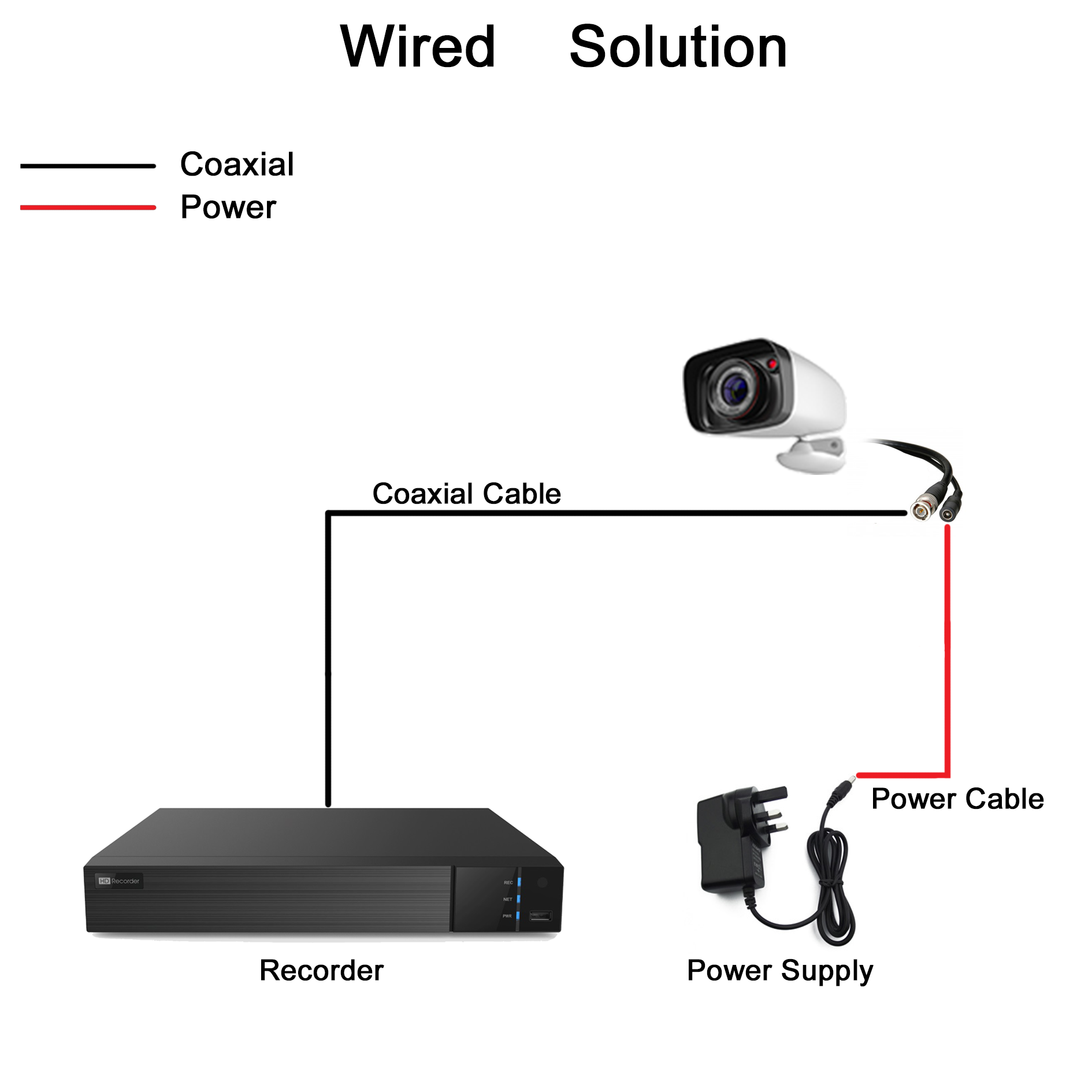
Cabling from camera to the recorder
Wireless Connectivity Diagram
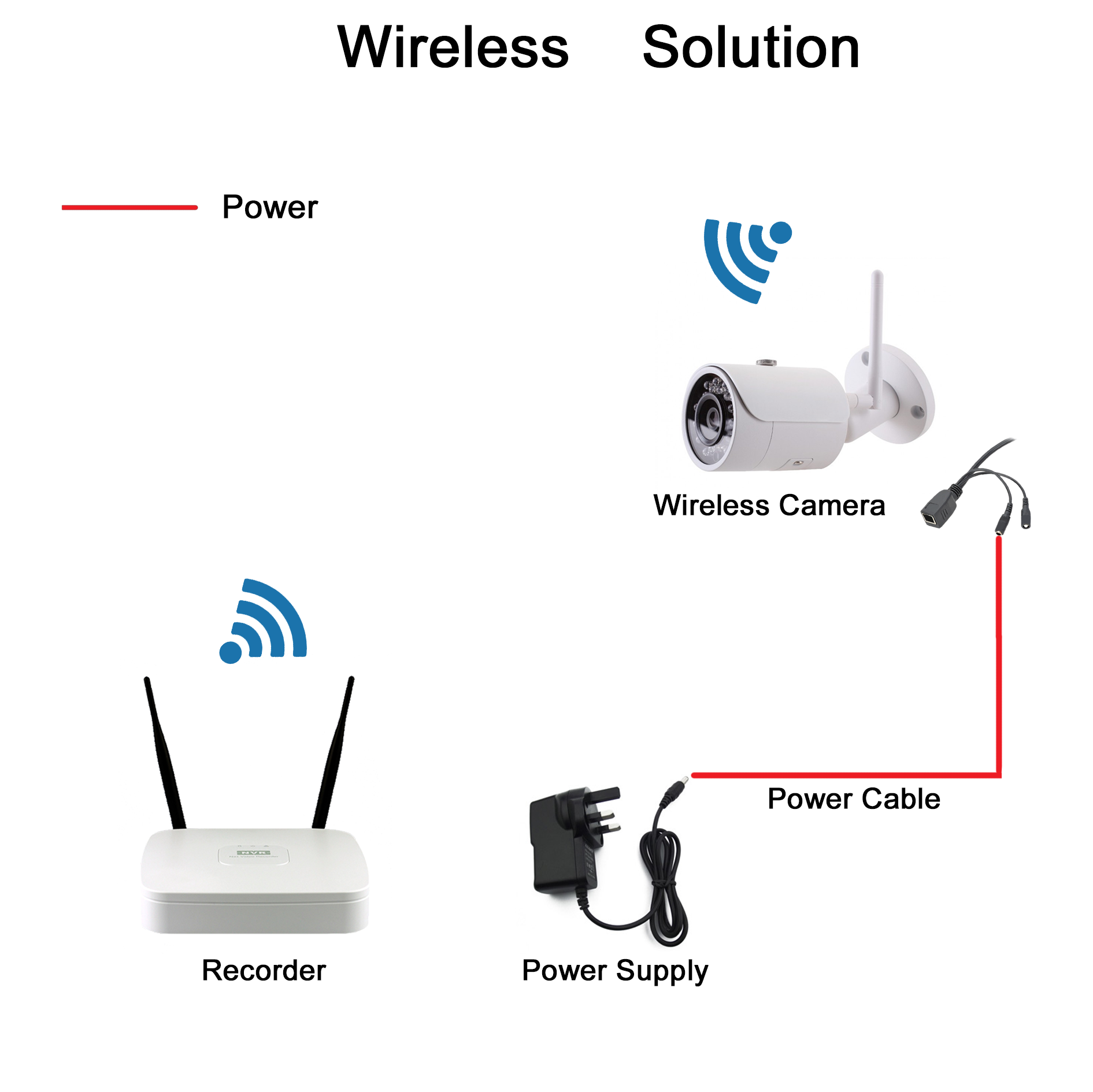
Camera connects with recorder wirelessly
Wi-Fi Camera Connectivity Diagram
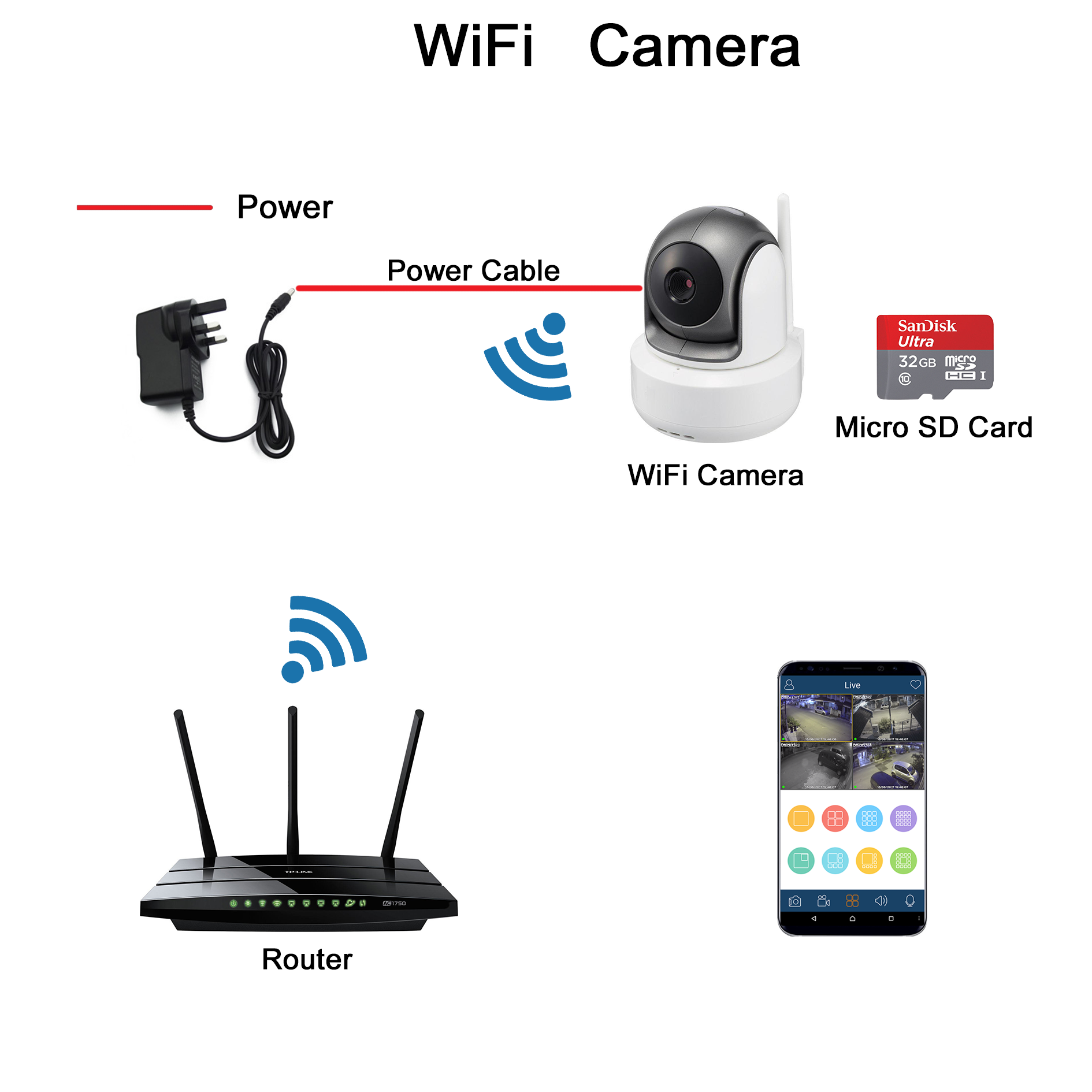
No recorder, micro sd card for recording
Wireless camera, it is quite interesting to certain people especially the younger generation. Wireless camera really saves us hassles in some situations, instead also saving our time and work. Unless a house or property is fully renovated, no hacking allowed then it is better to think of wireless solutions or else always go for wired solutions to have permanent and stable security systems. Using Bluetooth and WiFi as an example, both of it are closely connected to our daily life nowadays. Have you ever accidentally disconnected from your wireless router or bluetooth device? I guess the common answer is YES. There are always usage and distance limitation for wireless solutions. That is why we can’t fully depend on wireless security system. Besides that, wireless camera is not really cable-free, there is wireless signal for video transmission but there is no wireless power. Power cable is still a need, unless there is a switch socket at the location of installation.
| Wired | Wireless |
|---|---|
| No interference, signal not easily to be jammed | Can be placed anywhere (within WiFi signal range) |
| Reliable | Stability issue |
| No latency (HD Analog) or low latency (wired IP) | 3 to 5 seconds latency |
| Less expensive & longer lifespan | More expensive, but cheaper if only 1 camera needed, usually for apartment and condominium |
Of course, every camera comes with a lens, but do you know that we can actually select the focal length to suit the environment and location of installation. The focal length (measured in “mm”) of a lens determines how far the camera can see. Given example, a wide angle lens usually use at smaller places such as elevator, guard house and staircase. There are lenses from wide to narrow, 1.8mm, 2.8mm, 3.6mm, 4mm, 6mm, 8mm, 12mm, 16mm, 50mm and etc. Wide lens is to view nearer object, contrary narrow lens is to view further object. The most common focal length on security cameras are 3.6mm and 4mm, usually they fit perfectly in most environment.
UPS, Uninterruptible Power Supply. Batteries as a back-up power source, so you know you are covered during a power outage. During power outage, UPS let your security systems continue working for about 45mins to 90mins, depends on power consumption. It can prevent burglar cut off the electricity before they break in. Besides that, UPS is not only working when electricity cut off, UPS is always protecting the security systems as a voltage regulator, to protect the systems from voltage fluctuation caused by Lightning, Spike & Surge. Personally think that this is a must for security systems, I never let go a chance if it is under the client budget. In fact, I will ask them to get it somewhere else because this is not a good item to send by parcel due to its weight. No need to go for top brand like APC, too costly, any mid-range brand will do the job.
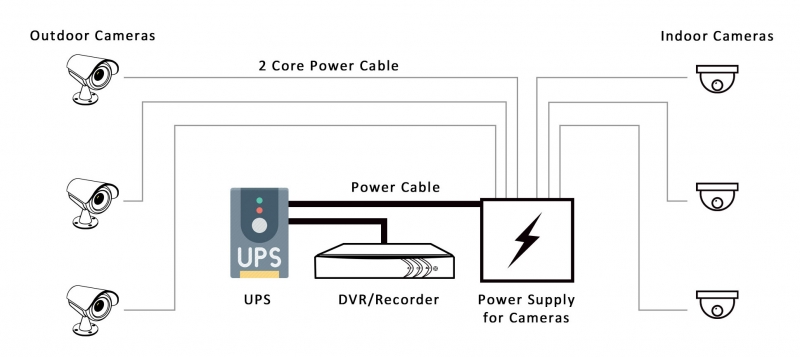
The Recorder and Power Supply are protect and stabilize by the UPS; make sure there is no interruption during power outage.

 Vietnam
Vietnam